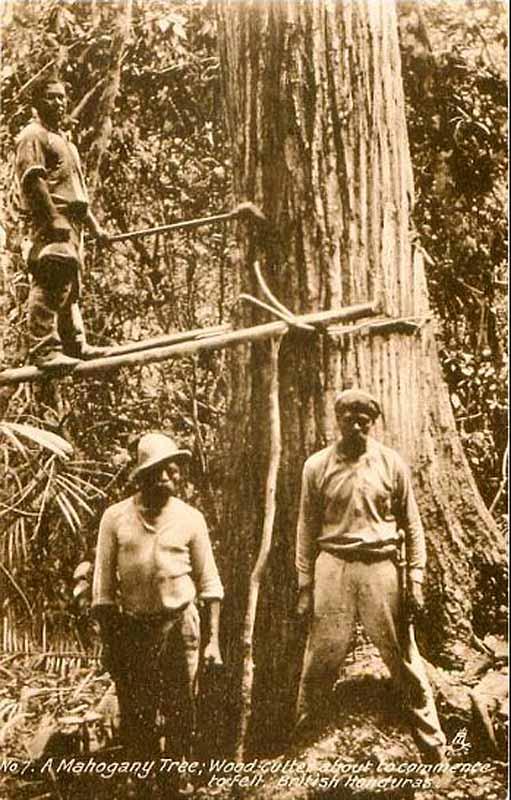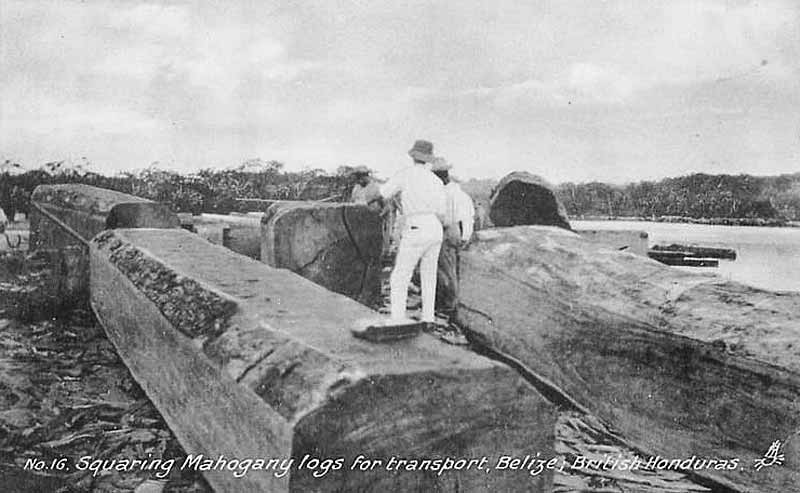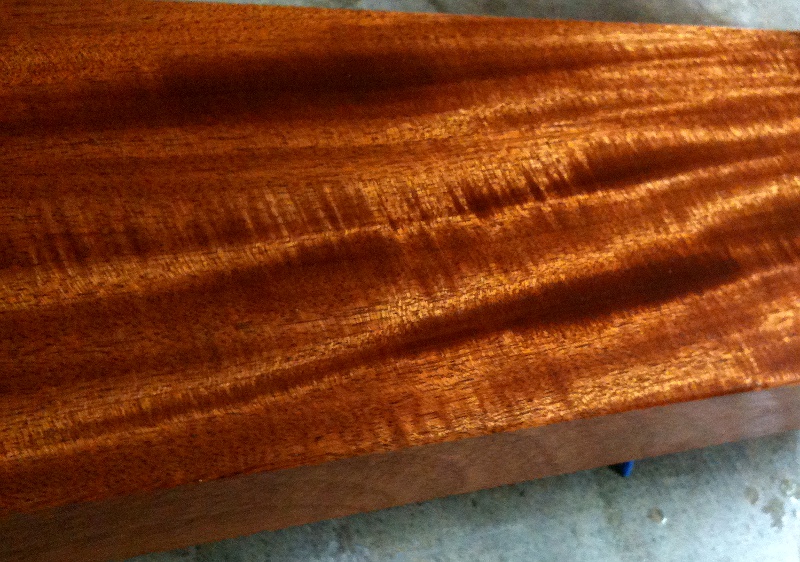You are using an out of date browser. It may not display this or other websites correctly.
You should upgrade or use an alternative browser.
You should upgrade or use an alternative browser.
MAHOGANY
- Thread starter Sigmania
- Start date

Help Support Tokai Forum:
This site may earn a commission from merchant affiliate
links, including eBay, Amazon, and others.
Fascinating article on the history and properties of the different mahoganies.
https://www.greenworldlumber.com/blog/mahogany-tree
"Nothing new here" indeed....
“Although the exact origins of the word ‘mahogany’ are unverifiable, it has been largely speculated that it could have come from the native people’s dialect in the region where it was grown. In this usage it would have been a noun to describe the tree by the native Mayans. This noun was transformed into an adjective by Spanish explorers at some point.
This might be the origins of the word mahogany, but there is another largely speculated theory concerning the slaves who were transported from Africa to America by European explorers. West Africans belonging to the Yoruba and Ibo peoples used the word ‘m’oganwo’ to describe the Khaya genus trees which grew natively in their homeland. The Khaya genus is a similar family to the American mahogany trees that the imported slaves would have seen upon their commission to the new world.
So the adaption of their native word would have likely been in use by the explorers, making this theory very difficult to dispute. Yet we do not know the words that would have been used by other native peoples in the natural ecosystems of the Mahogany tree.
Regardless of its precise origins into common vernacular, it is undisputable that the word ‘mahogany’ was in used widely enough to be included in works by London publisher John Ogilby for the first time in 1671. This is even before most of the major work had been done by botanists to properly classify and understand the types of trees that had been labelled with this word and all the connotations that arise from it.“
https://www.greenworldlumber.com/blog/mahogany-tree
"Nothing new here" indeed....
“Although the exact origins of the word ‘mahogany’ are unverifiable, it has been largely speculated that it could have come from the native people’s dialect in the region where it was grown. In this usage it would have been a noun to describe the tree by the native Mayans. This noun was transformed into an adjective by Spanish explorers at some point.
This might be the origins of the word mahogany, but there is another largely speculated theory concerning the slaves who were transported from Africa to America by European explorers. West Africans belonging to the Yoruba and Ibo peoples used the word ‘m’oganwo’ to describe the Khaya genus trees which grew natively in their homeland. The Khaya genus is a similar family to the American mahogany trees that the imported slaves would have seen upon their commission to the new world.
So the adaption of their native word would have likely been in use by the explorers, making this theory very difficult to dispute. Yet we do not know the words that would have been used by other native peoples in the natural ecosystems of the Mahogany tree.
Regardless of its precise origins into common vernacular, it is undisputable that the word ‘mahogany’ was in used widely enough to be included in works by London publisher John Ogilby for the first time in 1671. This is even before most of the major work had been done by botanists to properly classify and understand the types of trees that had been labelled with this word and all the connotations that arise from it.“
And this about the supply of Khaya/African mahogany:
“Because of habitat loss and degradation, along with selective cutting throughout its range, K. anthotheca is listed as “vulnerable” on the IUCN Red List. It has been proposed for inclusion in CITES Appendix I or II, but not enough is known about its regeneration, plantation growth, or sustainability under current practice.”
https://forestlegality.org/risk-tool/species/african-mahogany-timber
“Because of habitat loss and degradation, along with selective cutting throughout its range, K. anthotheca is listed as “vulnerable” on the IUCN Red List. It has been proposed for inclusion in CITES Appendix I or II, but not enough is known about its regeneration, plantation growth, or sustainability under current practice.”
https://forestlegality.org/risk-tool/species/african-mahogany-timber
mdvineng said:I think the majority of M used over this side of the pond since Victorian days is African and now leaning to Indian but both dwindling fast/rapidly.
Looks like you are correct re: supply of African mahogany.
“Because of habitat loss and degradation, along with selective cutting throughout its range, K. anthotheca is listed as “vulnerable” on the IUCN Red List. It has been proposed for inclusion in CITES Appendix I or II, but not enough is known about its regeneration, plantation growth, or sustainability under current practice.”
https://forestlegality.org/risk-tool/species/african-mahogany-timber
And looks like the supply of African mahogany/Khaya is dwindling too...
Wonder what the next wood will be?
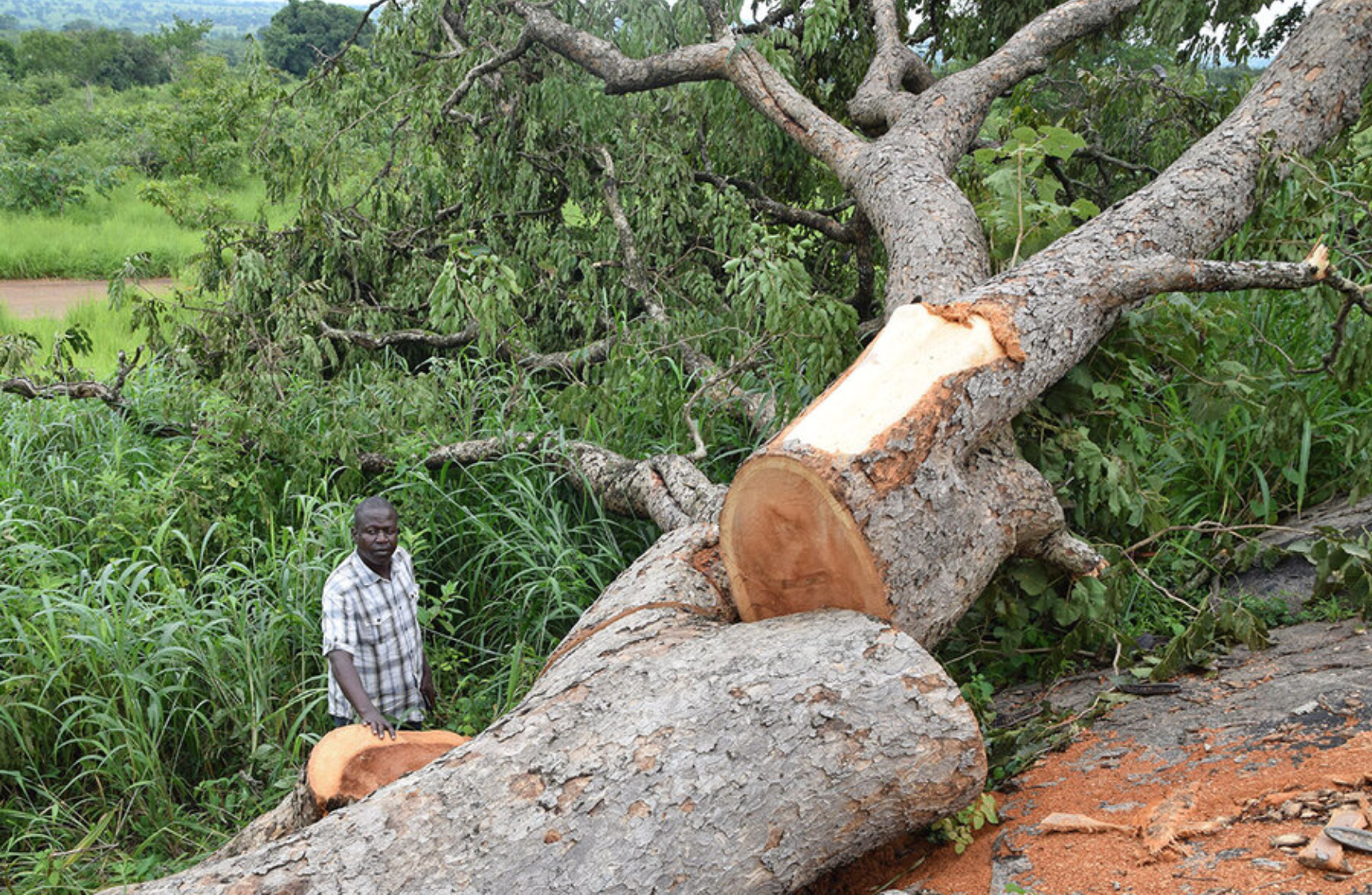
https://www.csmonitor.com/World/Afr...-forests-are-disappearing.-He-s-fighting-back
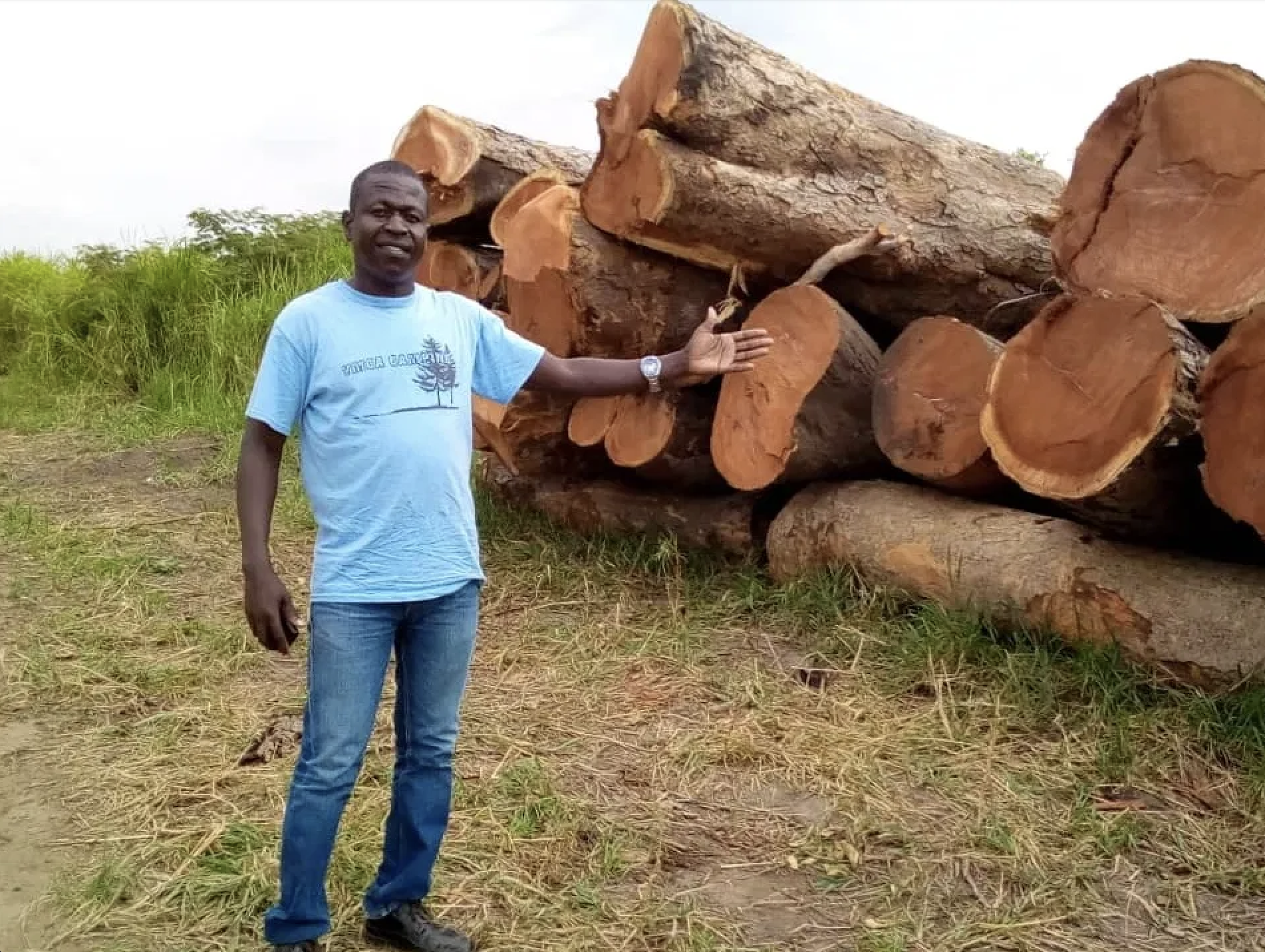
https://souwieon.com/tag/african-mahogany/
Wonder what the next wood will be?

https://www.csmonitor.com/World/Afr...-forests-are-disappearing.-He-s-fighting-back

https://souwieon.com/tag/african-mahogany/
I guess this is the reason mahogany is used for guitar necks.
“Mahogany is less liable to warping, shrinking, swelling, and twisting than other woods. This is because of its unusual resistance to moisture and atmospheric changes. Mahogany does not move – it holds its shape.”
https://www.greenworldlumber.com/blog/mahogany-tree
“Mahogany is less liable to warping, shrinking, swelling, and twisting than other woods. This is because of its unusual resistance to moisture and atmospheric changes. Mahogany does not move – it holds its shape.”
https://www.greenworldlumber.com/blog/mahogany-tree
“Looking again at the end section, you will see that Swietenia Mahogany displays concentric growth lines while African mahogany does not.
Running from the center of the tree to the circumference, basically parallel, and about the thickness of a pore apart, are the fine ribbon-like bands of tissue that make the inconspicuous “flake” or “sycamore grain” that shows when the wood is cut on the radius, or quartered.”
https://www.greenworldlumber.com/blog/mahogany-tree
The "flake" or "sycamore grain" on the neck of my 1982 LS120.
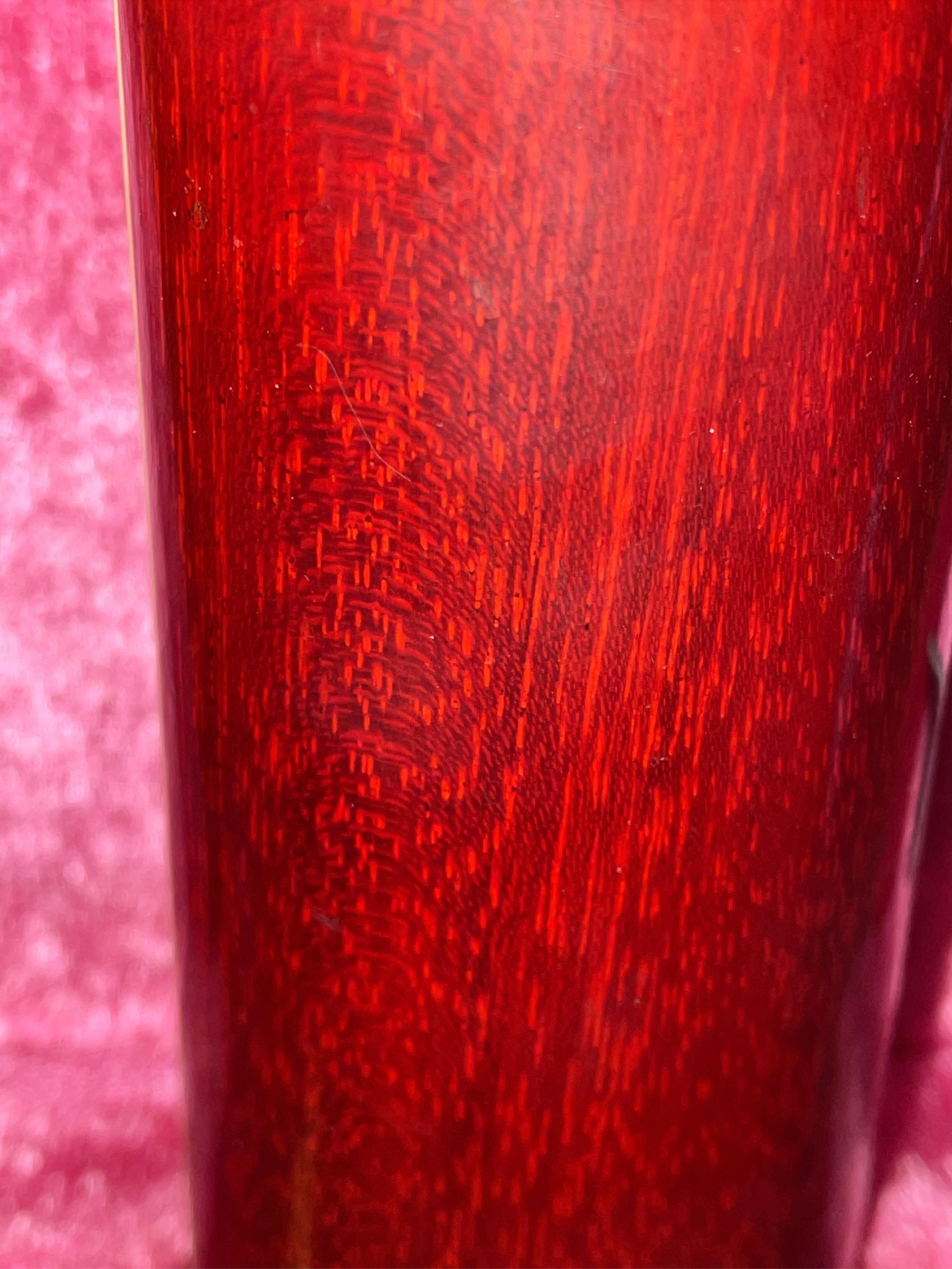
Running from the center of the tree to the circumference, basically parallel, and about the thickness of a pore apart, are the fine ribbon-like bands of tissue that make the inconspicuous “flake” or “sycamore grain” that shows when the wood is cut on the radius, or quartered.”
https://www.greenworldlumber.com/blog/mahogany-tree
The "flake" or "sycamore grain" on the neck of my 1982 LS120.

There is a lot of mystery and lore around mahogany. It's had quite a legacy historically since its discovery by Europeans in the American tropics and subsequent enduring popularity.
But there are some individual trees that have become legendary because of their unique story and grain.
I heard one story 30 years ago about some mahogany logs found submerged in a river in Florida for who knows how long? What they call "sinkers". I was looking at a Froggy Bottom guitar in a guitar shop in the Fremont neighborhood of Seattle. To this day I remember that guitar and wish I had found a way to buy it.
Another such legendary find is simply called "The Tree".
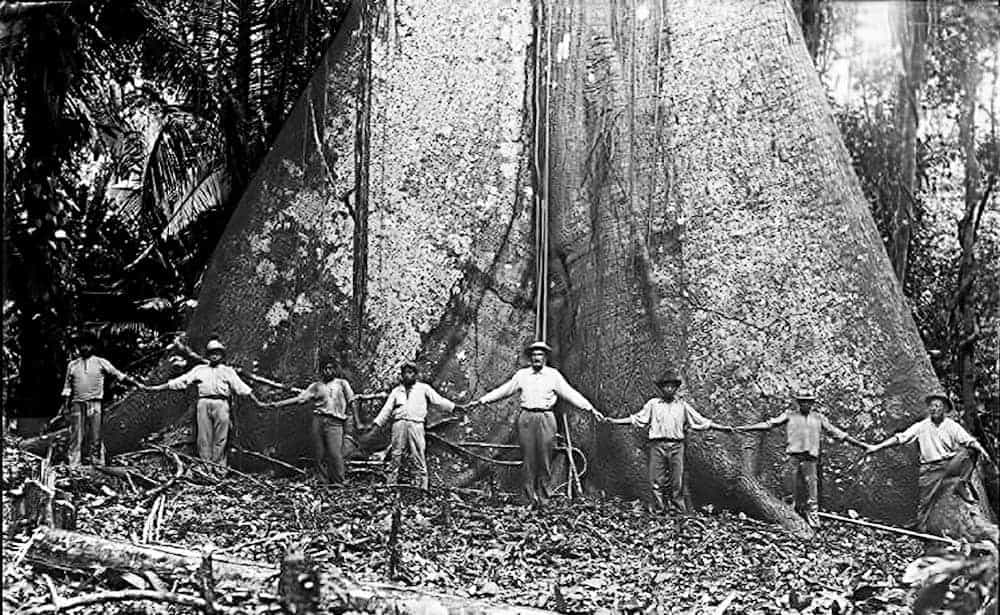
It was an exceptional tree in both size and the curly grain it produced. The wood has been used on high end acoustic guitars, custom furniture, etc.
Here is Robert Novak with some lumber from the tree showing its curly grain.

https://acousticguitar.com/welcome-to-the-jungle/
A Santa Cruz OM built from this wood for $20,000.

https://eddiesguitars.com/acoustic-...-cruz-om-custom-moon-spruce-the-tree-mahogany
Stew Mac is selling a set of sides and back to build a guitar from this wood for $6,000. Just for the sets...
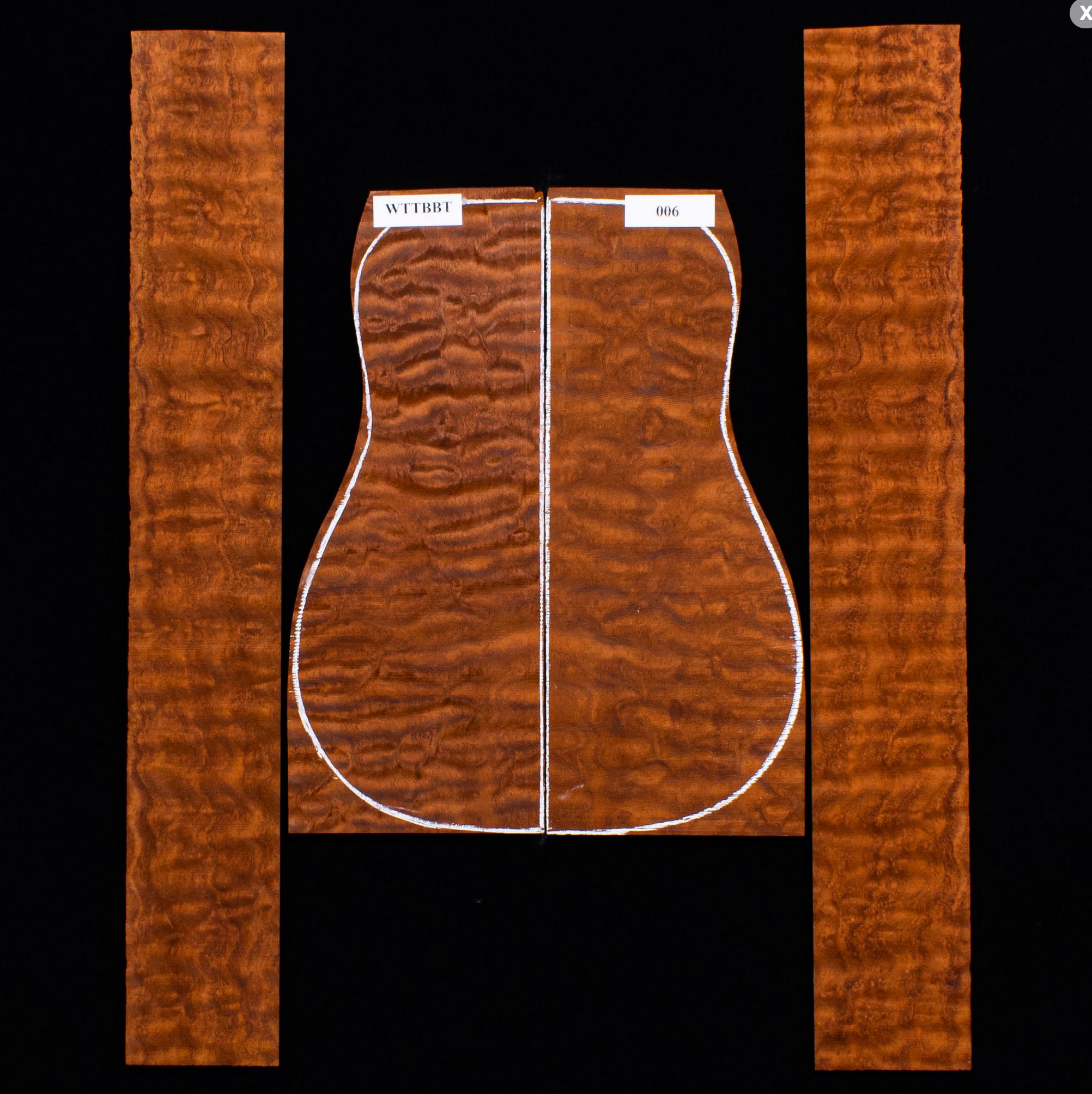
https://www.stewmac.com/tonewoods/w...F3dDW6WCm0YbSG19MyR_4MygV8hIkgChoCdGIQAvD_BwE
Just had to mention that in this discussion of mahogany. It's a special wood.
But there are some individual trees that have become legendary because of their unique story and grain.
I heard one story 30 years ago about some mahogany logs found submerged in a river in Florida for who knows how long? What they call "sinkers". I was looking at a Froggy Bottom guitar in a guitar shop in the Fremont neighborhood of Seattle. To this day I remember that guitar and wish I had found a way to buy it.
Another such legendary find is simply called "The Tree".

It was an exceptional tree in both size and the curly grain it produced. The wood has been used on high end acoustic guitars, custom furniture, etc.
Here is Robert Novak with some lumber from the tree showing its curly grain.

https://acousticguitar.com/welcome-to-the-jungle/
A Santa Cruz OM built from this wood for $20,000.

https://eddiesguitars.com/acoustic-...-cruz-om-custom-moon-spruce-the-tree-mahogany
Stew Mac is selling a set of sides and back to build a guitar from this wood for $6,000. Just for the sets...

https://www.stewmac.com/tonewoods/w...F3dDW6WCm0YbSG19MyR_4MygV8hIkgChoCdGIQAvD_BwE
Just had to mention that in this discussion of mahogany. It's a special wood.
- Joined
- Dec 5, 2013
- Messages
- 1,193
- Reaction score
- 256
that is what is commonly referred to as medullary ray
https://en.wikipedia.org/wiki/Medullary_ray_(botany)
https://en.wikipedia.org/wiki/Medullary_ray_(botany)
Sigmania said:“Looking again at the end section, you will see that Swietenia Mahogany displays concentric growth lines while African mahogany does not.
Running from the center of the tree to the circumference, basically parallel, and about the thickness of a pore apart, are the fine ribbon-like bands of tissue that make the inconspicuous “flake” or “sycamore grain” that shows when the wood is cut on the radius, or quartered.”
https://www.greenworldlumber.com/blog/mahogany-tree
The "flake" or "sycamore grain" on the neck of my 1982 LS120.

guitar hiro said:that is what is commonly referred to as medullary ray
https://en.wikipedia.org/wiki/Medullary_ray_(botany)
Sigmania said:“Looking again at the end section, you will see that Swietenia Mahogany displays concentric growth lines while African mahogany does not.
Running from the center of the tree to the circumference, basically parallel, and about the thickness of a pore apart, are the fine ribbon-like bands of tissue that make the inconspicuous “flake” or “sycamore grain” that shows when the wood is cut on the radius, or quartered.”
https://www.greenworldlumber.com/blog/mahogany-tree
The "flake" or "sycamore grain" on the neck of my 1982 LS120.

Fancy words... 8)
Yes indeed. Where is the beer toasting icon on here? :lol:
- Joined
- Dec 5, 2013
- Messages
- 1,193
- Reaction score
- 256
Beer? Hell yes, we need BEER!!!!!! 8)
This article says:
“African mahogany looks, feels and sounds like Central American mahogany. However, the wood grows so quickly that it can meet commercial demand without a detrimental impact on the environment.”
Not sure if that’s true. Other stuff I’ve read seemed to say the opposite. Hopefully this is true.
https://www.thaliacapos.com/blogs/blog/know-your-tonewood-mahogany
“African mahogany looks, feels and sounds like Central American mahogany. However, the wood grows so quickly that it can meet commercial demand without a detrimental impact on the environment.”
Not sure if that’s true. Other stuff I’ve read seemed to say the opposite. Hopefully this is true.
https://www.thaliacapos.com/blogs/blog/know-your-tonewood-mahogany
- Joined
- Dec 5, 2013
- Messages
- 1,193
- Reaction score
- 256
Sigmania said:This article says:
“African mahogany looks, feels and sounds like Central American mahogany. However, the wood grows so quickly that it can meet commercial demand without a detrimental impact on the environment.”
Not sure if that’s true. Other stuff I’ve read seemed to say the opposite. Hopefully this is true.
https://www.thaliacapos.com/blogs/blog/know-your-tonewood-mahogany
The 1 piece body back on my 2011 Bacchus BLP-STD FM Relic looks a lot like the last photo (finished mahogany board) in that article.
- Joined
- Dec 5, 2013
- Messages
- 1,193
- Reaction score
- 256
I'm very confident the body back on my BLP is some species of Khaya
Sigmania said:
I found this on the acoustic guitar forum in a discussion of mahogany. I’m not certain what they mean by “storied rays”. Still trying to find an illustration of them.
“Another trick to tell Swietenia species from Khaya species, especially if you do not have access to the endgrain, is to look for ripple marks on a flatsawn surface of the wood.
Basically, on many pieces of Swietenia-genus mahogany, the rays (small reddish brown slits) will collectively be arranged in neat little rows (called storied rays), which appear as minute little ripple marks that are seen clearest on flatsawn portions....
These ripple marks are sometimes (but not always) seen in Swietenia species (as well as Sapele), but almost never in the African Khaya species.
An absence of ripple marks is ambiguous (could be either genera), while the presence of ripple marks strongly points to a Swietenia species.”
https://www.acousticguitarforum.com/forums/showthread.php?t=564220&page=4
“Another trick to tell Swietenia species from Khaya species, especially if you do not have access to the endgrain, is to look for ripple marks on a flatsawn surface of the wood.
Basically, on many pieces of Swietenia-genus mahogany, the rays (small reddish brown slits) will collectively be arranged in neat little rows (called storied rays), which appear as minute little ripple marks that are seen clearest on flatsawn portions....
These ripple marks are sometimes (but not always) seen in Swietenia species (as well as Sapele), but almost never in the African Khaya species.
An absence of ripple marks is ambiguous (could be either genera), while the presence of ripple marks strongly points to a Swietenia species.”
https://www.acousticguitarforum.com/forums/showthread.php?t=564220&page=4
Still trying to sort out what is meant by "storied rays".
Here is an article with a picture of the medullary rays guitar hiro mentioned in African mahogany.
https://homegrownlutherie.wordpress.com/2013/03/02/a-trick-to-identify-quartersawn-wood/
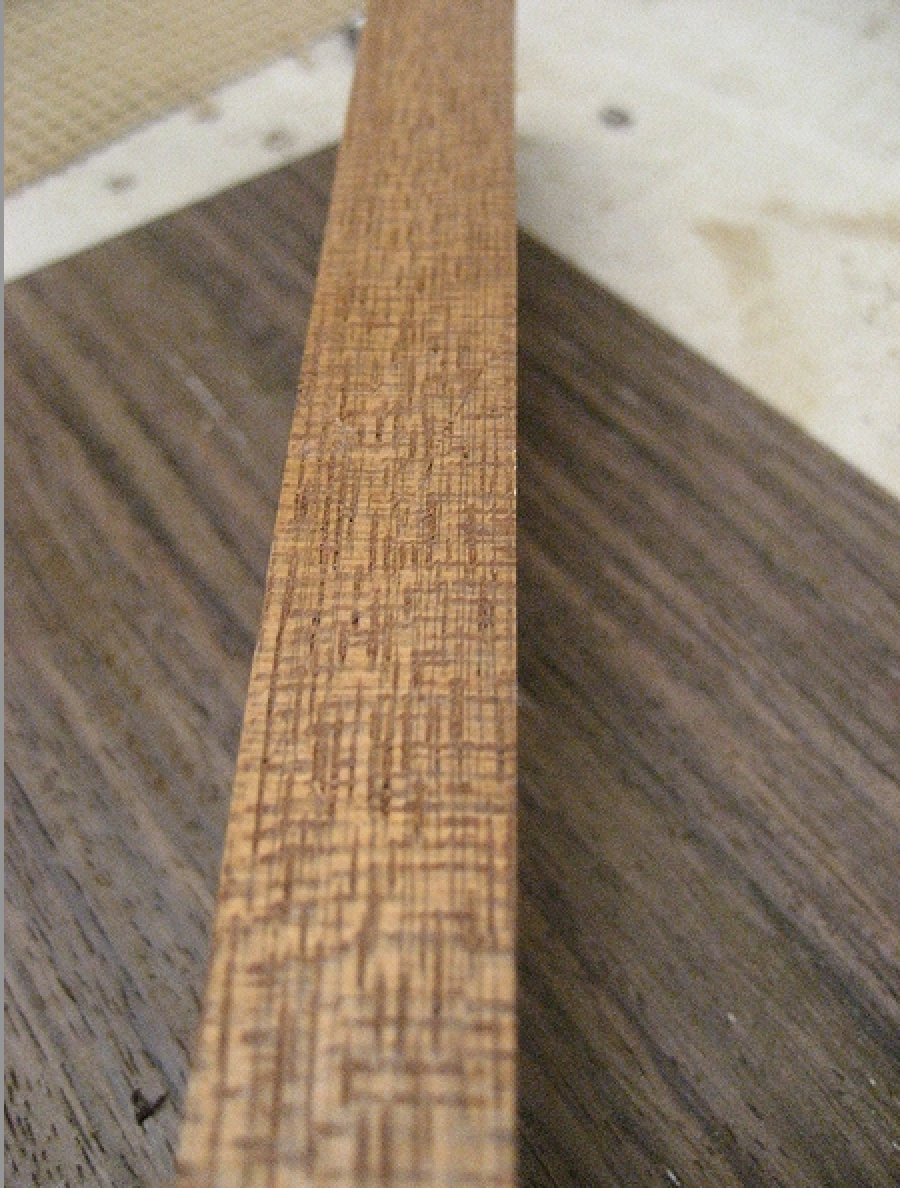
Here is an article with a picture of the medullary rays guitar hiro mentioned in African mahogany.
https://homegrownlutherie.wordpress.com/2013/03/02/a-trick-to-identify-quartersawn-wood/

And an interesting article with different types of figure in wood grain.
https://gobywalnut.com/blogs/articles/lets-talk-about-figure
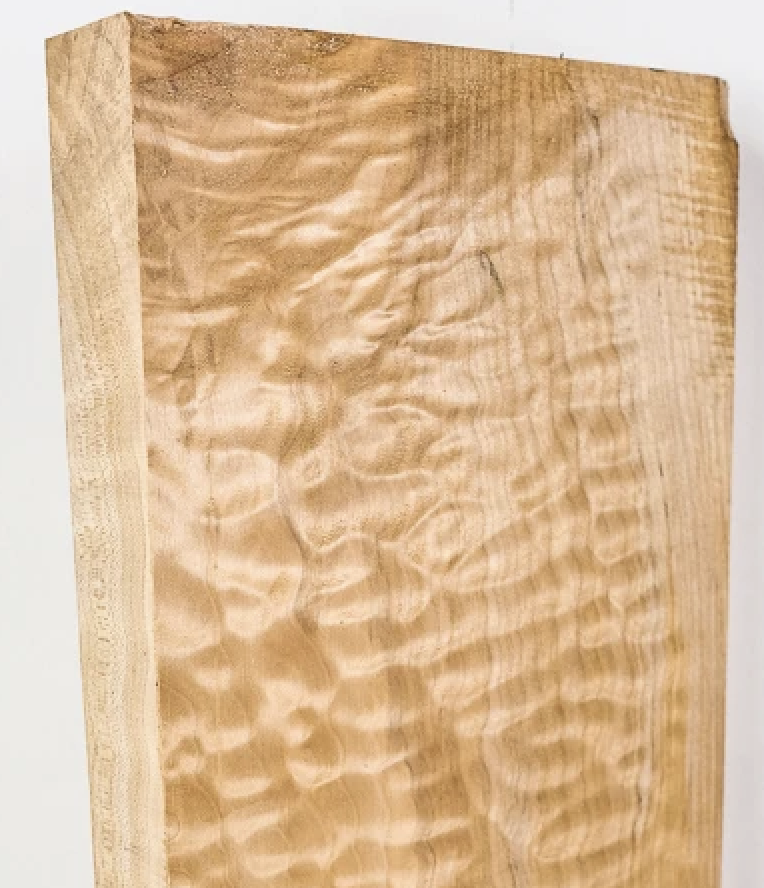
https://gobywalnut.com/blogs/articles/lets-talk-about-figure

OK, I found a better description of "storied rays".
"Storied rays
One final characteristic of rays involves examining the flatsawn (tangential) surface of the wood. In some wood species, (particularly those in tropical regions), the rays tend to be aligned in horizontal or diagonal tiers, also referred to as stories. This pattern is called storied rays, and it produces a visual phenomenon known as ripple marks.Even though there’s technically no unevenness in the wood, to the unaided eye, (and at low levels of magnification), storied rays appear as minute stripes of wood alternating between light and dark. In addition to the rays, other anatomical features (such as the parenchyma or the fibers) can also form stories, and therefore produce ripple marks.
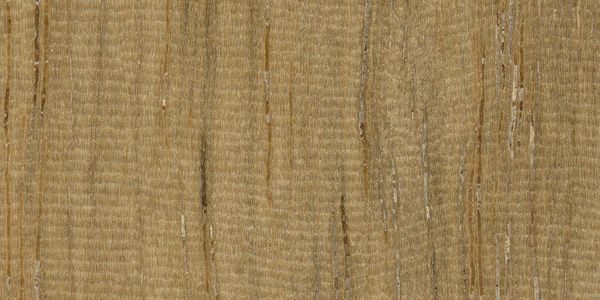
This flatsawn view of persimmon (Diospyros virginiana) exhibits ripple marks. Besides the rays, persimmon also has numerous other storied structures present. (4×)
In addition to persimmon (Diospyros virginiana)—a temperate species—some notable tropical species with storied structures include: most rosewoods (Dalbergia spp.), Honduran mahogany (Swietenia macrophylla), and sapele (Entandrophragma cylindricum)."
https://www.wood-database.com/wood-articles/hardwood-anatomy/
"Storied rays
One final characteristic of rays involves examining the flatsawn (tangential) surface of the wood. In some wood species, (particularly those in tropical regions), the rays tend to be aligned in horizontal or diagonal tiers, also referred to as stories. This pattern is called storied rays, and it produces a visual phenomenon known as ripple marks.Even though there’s technically no unevenness in the wood, to the unaided eye, (and at low levels of magnification), storied rays appear as minute stripes of wood alternating between light and dark. In addition to the rays, other anatomical features (such as the parenchyma or the fibers) can also form stories, and therefore produce ripple marks.

This flatsawn view of persimmon (Diospyros virginiana) exhibits ripple marks. Besides the rays, persimmon also has numerous other storied structures present. (4×)
In addition to persimmon (Diospyros virginiana)—a temperate species—some notable tropical species with storied structures include: most rosewoods (Dalbergia spp.), Honduran mahogany (Swietenia macrophylla), and sapele (Entandrophragma cylindricum)."
https://www.wood-database.com/wood-articles/hardwood-anatomy/
Similar threads
- Replies
- 1
- Views
- 128
- Replies
- 17
- Views
- 927
- Replies
- 0
- Views
- 149



